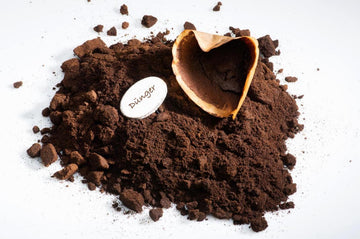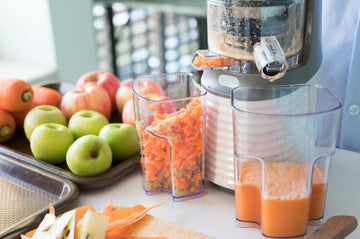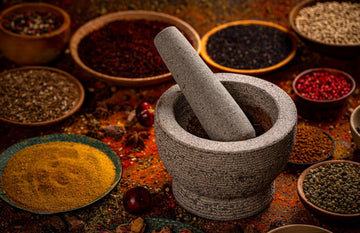Most people brew their morning coffee, toss the used grounds into the trash, and never think twice about it. But those damp, leftover granules carry more potential than they seem to at first glance. Used coffee grounds retain a surprising amount of nutrients, aromatic oils, and natural compounds that make them useful well beyond the cup.
Whether repurposed in the garden, the kitchen, or even skincare, they can serve practical functions instead of becoming simple waste. In the sections ahead, we’ll look at what makes used coffee grounds unique, their nutritional profile, and the many ways you can put them to good use.
Nutrition facts for used coffee grounds
While most of the soluble compounds in coffee are extracted during brewing, used grounds are not nutritionally empty. They still hold a variety of elements that make them valuable. For instance, they contain significant amounts of dietary fiber, much of it in the form of insoluble polysaccharides such as cellulose. This means coffee grounds can add bulk when incorporated into compost or even experimental food uses, though they are not typically consumed directly.

Minerals remain in noticeable levels as well. Potassium, magnesium, phosphorus, and calcium are present in smaller but meaningful amounts, which explains why gardeners often use spent grounds to enrich soil. Nitrogen content is particularly important, as it contributes to plant growth and is a reason why coffee grounds are considered a “green” material in composting.
Beyond minerals, traces of antioxidants and phenolic compounds can persist even after brewing. These compounds are diminished compared to fresh beans but still contribute to the potential for reuse in skincare, where exfoliating and antioxidant qualities are often highlighted. Caffeine itself is also not fully extracted during brewing, so used grounds still contain residual amounts, which can be stimulating when applied topically.
In short, while you wouldn’t rely on used coffee grounds as a primary nutrient source in your diet, their composition makes them surprisingly resourceful for secondary uses—something we’ll expand on in the next section.
Uses for coffee grounds
Used coffee grounds may seem like waste, but their texture, mineral content, and residual compounds make them practical in more ways than most people expect.
1. Fertilizer for plants
Used coffee grounds are often mixed directly into garden soil as a slow-release fertilizer. While they’re not a complete nutrient source, they contain nitrogen, calcium, magnesium, potassium, and small amounts of other trace minerals that contribute to soil health. When combined with compost or organic matter, they help improve soil structure, making it easier for roots to spread and water to be absorbed evenly. Many gardeners prefer using coffee grounds on acid-loving plants such as blueberries, azaleas, and hydrangeas, although once rinsed, the acidity of grounds is greatly reduced.
2. Compost material
Beyond direct fertilization, coffee grounds are a strong “green” addition to compost bins. In composting terms, “green” refers to nitrogen-rich organic matter, which complements “browns” such as dried leaves, cardboard, and wood chips. Grounds break down relatively quickly and, when balanced properly, generate heat that speeds up decomposition. By mixing grounds into compost piles rather than dumping them all at once, you avoid compaction and maintain airflow. For households that brew coffee daily, composting grounds ensures nothing goes to waste.
3. Natural pest deterrent
Gardeners sometimes scatter used grounds around the base of plants to deter slugs, snails, and ants. While not foolproof, the abrasive texture of coffee grounds can create a physical barrier that crawling insects dislike crossing. Some claim that the residual caffeine may also repel pests, though the effectiveness varies. Regardless, grounds are safe to use compared to chemical deterrents, and their natural origin makes them appealing for those avoiding synthetic pesticides.
4. Odor absorber
Coffee grounds excel at neutralizing odors thanks to their nitrogen content and porous texture, which allows them to absorb and trap molecules that cause unpleasant smells. A bowl of dried grounds placed inside the refrigerator or freezer helps remove lingering food odors. The same technique works for closets, shoes, gym bags, or garbage bins. Grounds can even be stored in small breathable pouches or socks for portable odor control. Unlike artificial air fresheners, which mask smells, coffee grounds absorb them, offering a subtle and natural alternative.
5. Exfoliating scrub for skin
The coarse yet fine texture of coffee grounds makes them an excellent natural exfoliant. Mixed with a small amount of coconut oil, olive oil, or honey, they create a scrub that removes dead skin cells and stimulates circulation. Some people also add a pinch of sugar or sea salt to intensify the scrub. The grounds are gentle enough to use on the body but may feel too abrasive for sensitive facial skin. Unlike many store-bought scrubs that contain microplastics, coffee grounds are biodegradable, making them eco-friendly as well.
6. Cleaning agent for pots and pans
Stubborn grease or burnt residue on pots, pans, and baking trays can be loosened with coffee grounds. Their gritty texture works as a mild abrasive without being as harsh as steel wool. Sprinkling damp grounds onto cookware and scrubbing with a sponge helps lift food particles while reducing odors from garlic, onion, or fish. This method works best on stainless steel or cast iron surfaces, but should be avoided on delicate materials like nonstick coatings to prevent scratching.
7. Homemade candles and air fresheners
Coffee grounds can be repurposed in home crafts, particularly in candles. Adding dried grounds to melted wax not only provides a speckled, rustic look but also releases a subtle coffee aroma when the candle burns. Similarly, mixing them into sachets or potpourri can create natural air fresheners with a warm, earthy scent. These DIY uses highlight the grounds’ ability to enhance both appearance and fragrance without relying on synthetic additives.
8. Scouring for household surfaces
Beyond cookware, coffee grounds can be used to clean a variety of household surfaces. When applied with a damp cloth or sponge, they help remove residue from grills, sinks, or garden tools. Their abrasive quality is strong enough to scrub grime yet mild compared to commercial scouring powders. Since coffee grounds are dark, they should not be used on light-colored or porous surfaces that might stain, but for tougher, durable materials they can be a handy, low-cost cleaning option.

9. Tenderizing meat
Coffee grounds, with their natural acidity and residual enzymes, can act as a meat tenderizer. When mixed into a marinade or rubbed directly onto cuts of beef or pork, they help break down proteins while adding a subtle smoky flavor. Used grounds are ideal here because they’re less bitter than fresh ones but still hold enough compounds to make a difference. After marinating, the meat should be rinsed or wiped before cooking to avoid grittiness.
10. Homemade dye for fabric and paper
The rich brown color of used coffee grounds can be repurposed into a natural dye. By steeping them in hot water, you can create a liquid dye bath that stains cotton, linen, or paper with earthy tones ranging from light tan to deep brown depending on the concentration. This method is popular for giving fabrics a vintage look or for craft projects like dyeing yarn or creating aged-looking parchment.
11. Crafting natural wood stain
Beyond fabric, coffee grounds can be used as a low-cost, eco-friendly wood stain. Applying steeped grounds or a coffee “paste” directly onto unfinished wood produces a rustic, warm finish. The effect can be layered for darker tones, and it provides a non-toxic alternative for small projects like furniture touch-ups, picture frames, or wooden boxes.
12. Growing mushrooms at home
Used coffee grounds provide an excellent substrate for cultivating mushrooms. They already contain partially broken-down organic matter and plenty of nitrogen, making them a ready medium for fungi like oyster mushrooms. Many home gardeners mix grounds with straw or sawdust, then inoculate the mixture with mushroom spores. This transforms kitchen waste into a productive growing medium with little extra cost.
From waste to resource
Used coffee grounds may look like waste, but they carry far more potential than what’s left at the bottom of a filter. From practical household cleaning to soil enrichment, personal care, crafting, and even food preparation, these grounds can take on a second life in surprising ways.
While they’re not a cure-all solution for every project, their versatility makes them worth saving instead of throwing away. Keeping a jar of dried grounds on hand can turn a daily coffee habit into a small but consistent way of reducing waste and adding value across different parts of your home.
FAQs
Can used coffee grounds go bad if stored for too long?
Yes. If stored damp, used coffee grounds can quickly develop mold within a few days. To prevent this, spread them out to dry completely before storing in an airtight container. Properly dried grounds can last for months and remain usable for most household applications.
Are used coffee grounds safe to use directly in the garden?
They can be, but moderation is important. Sprinkling thick layers of coffee grounds on soil can create a compact barrier that restricts water flow. A better approach is to mix dried grounds lightly into the soil or blend them with compost to balance acidity and texture.
Can you use coffee grounds for skincare every day?
No. Coffee grounds are abrasive, and daily use can irritate or scratch skin. They’re best applied once or twice a week as part of an exfoliating routine. Mixing them with a soothing base like honey or coconut oil helps reduce irritation while still providing the scrubbing effect.






